15 Interesting & Fun Ostrich Facts
This post may contain affiliate links that earn us a commission at no extra cost to you.
Discover some of the most interesting and fun ostrich facts for adults and kids.
Although not native to Aruba, we first saw ostriches in real life at the Aruba Ostrich Farm, which taught us all about these rather intimidating birds.
Native to Africa, you’ll now encounter ostriches on farms across the world, including destinations like Australia, Aruba, and the U.S.
What are some of the most surprising and fun facts about ostriches that everyone can appreciate?
We were shocked to learn that they never bond with humans, especially since we know other birds, like emus, can be quite loving.
Do you follow Emmanuel Todd Lopez on Instagram?
And, ostriches can run incredibly fast and have an impressive wing span – but they cannot fly. They kick for the gold medal.
Have you ever held an ostrich egg? It’s huge!
We’ve even fed ostriches, and their powerful beaks are unnerving. We guess when you have three stomachs, you might always be hungry.
Keep reading for even more great information about ostriches as well as a few ostrich facts for kids. Let’s get started!
Read more about our experience at the Ostrich Farm in Aruba.

15 Fun Ostrich Facts
By Jeremy Paterson
All pictures are from Christine and Tom’s visit to the Aruba Ostrich Farm
1. Ostriches are very big
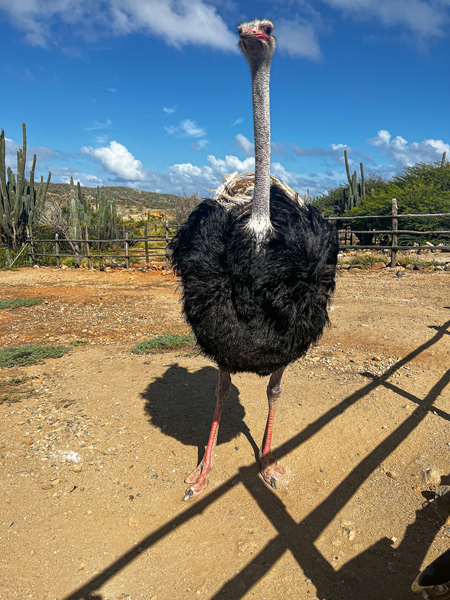
We can’t start talking about ostrich facts without knowing what they look like, and for starters, they’re big. Very big.
In fact, the ostrich is the world’s largest bird!
An adult ostrich can grow 9 feet tall, with almost half of that being its neck. That means an ostrich would have trouble standing up straight in most houses in the United States.
They’re wide too; an ostrich’s wingspan is over 6 feet across, for the world’s biggest bird hug (but we wouldn’t advise trying that).
As for an ostrich’s weight, all that height does add up. Adult ostriches can weigh over 300 pounds!
2. Ostrich wings are not for flying
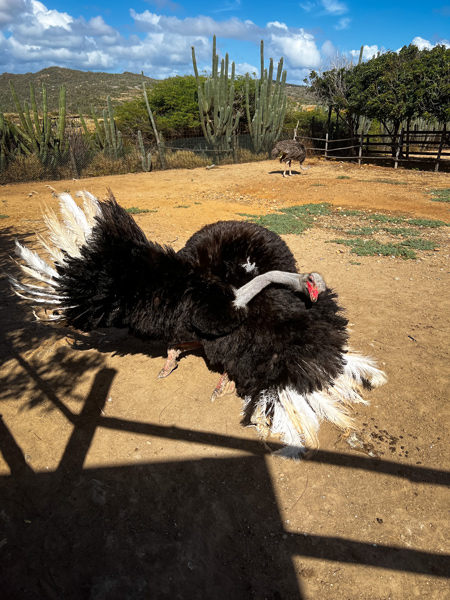
if ostriches could fly, it would be terrifying. Fortunately for us, though, the ostrich is a flightless bird and has to walk on its powerful legs instead.
However, they still look quite striking even though they’re bound to the ground. And how they use their wings is one of the more interesting facts about ostriches.
When an ostrich runs, it builds up speed. With plenty of air rushing past an ostrich, it will put those big, wide wings to good use.
Much like a ship uses sails to turn in the water, ostriches use their wings to help them bank, turn, slow down, and maintain their balance while they run.
They also use them as part of their elaborate mating rituals, where they create an elaborate display in order to attract potential partners – that’s one of your bonus ostrich facts!
3. Ostriches are quite fast
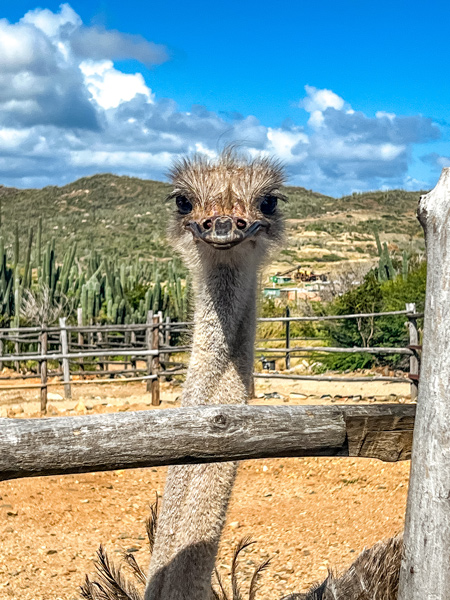
Despite their large size and seemingly ungainly biological construction, ostriches can run at incredibly high speeds for a living being.
An ostrich can sprint at speeds of up to 43 miles per hour and can maintain a consistent run at 30-37 miles per hour.
To put that in context, an ostrich would beat the current world record for the 100 meters sprint at the Olympics in almost half the time!
More bonus information about ostriches: while running, an ostrich can cover over 12 feet in one stride, leaping over two human adults lying end to end with ease.
Essentially, ostriches are multiple record holders. They are the world’s fastest bird on land, and they’re also the world’s fastest animal to run on only two legs.
4. Ostrich feet are not like other bird feet
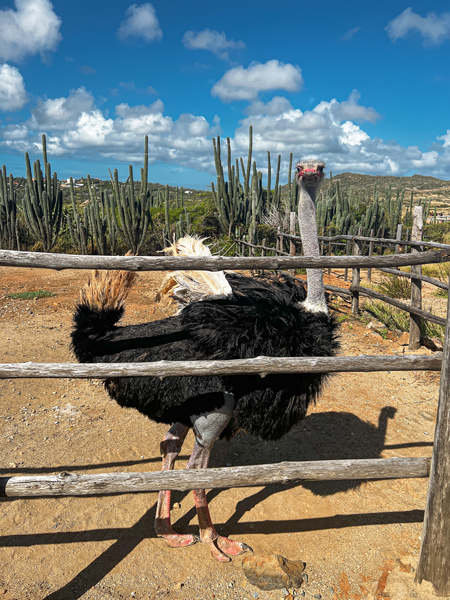
Here’s one of the more fun facts about ostriches – their feet!
Over the years, ostriches have evolved to have some pretty complex feet.
Instead of being closely related to other birds, the feet of an ostrich are actually not too dissimilar to horse hoofs.
Ostrich feet have only two toes (unlike other birds which usually have four), with one proportionately massive forward toe and a smaller, more stabilizing toe to the side.
Both toes have claws, and the larger toe helps propel the ostrich while it runs by digging into the ground and pulling it forward.
5. Studies of ostrich feet have led scientists to new innovations
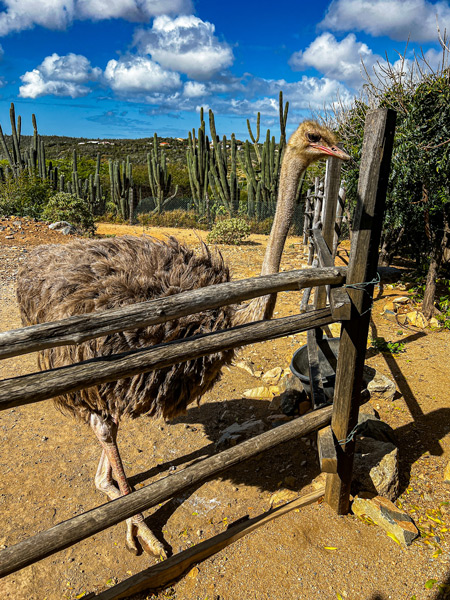
This is one of the most productive ostrich facts on this list.
Scientists have taken to learning facts about the ostrich, in order to improve their understanding of the mechanics of bipedal movement.
What I mean to say is, ostrich feet are so unique and interesting that scientists think they’re the way forward (quite literally) when it comes to walking robots.
Designs based on ostrich feet have led to improvements in how robots and other machines traverse uneven ground!
6. An ostrich can kick you so hard you’ll die
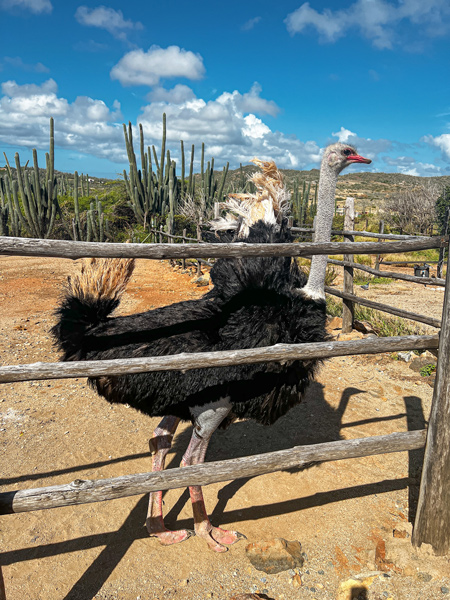
So this is not so much information about ostriches as it is a warning.
We’ve discussed the ostrich’s feet and mentioned the claws on their toes. Well, those claws can also be used to cause some serious harm.
A kick from an ostrich can break bones and cause severe bruising. Their claws are capable of stabbing people fatally.
Plus, because of the way their legs work, an ostrich can kick forwards while facing you, unlike other birds which would have to turn around first.
On top of that, they are not averse to slamming their 300-plus-pound body into a would-be attacker.
Fortunately, ostriches are most likely to cause harm when their nests are threatened, usually by lions, hyenas, jackals, cheetahs, or other wild animals.
Ostrich facts PSA: just don’t try and steal an egg from an ostrich nest and you’ll probably be OK.
7. Ostrich eggs are also massive
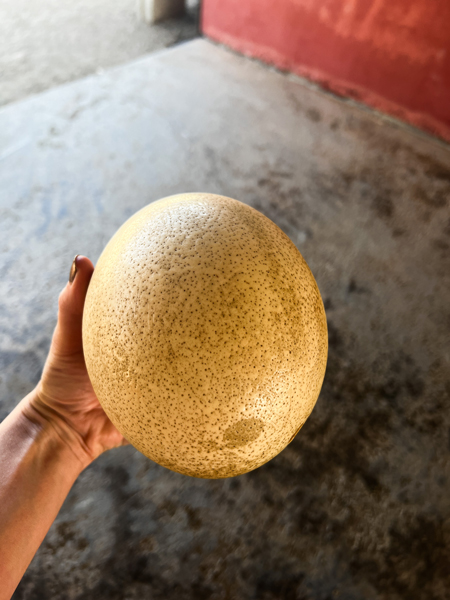
Just like the birds who make them, ostrich eggs are on the large side. They are the largest bird eggs in the world, in fact.
Some ostrich egg facts for all the statisticians out there: ostrich eggs weigh on average around 3 pounds each, which is the same as two dozen chicken eggs.
They are roughly the same size as the average adult human hand (about 6 inches long).
In one nest, an ostrich will incubate around 20 eggs. Oftentimes they will have more that they could keep in there, but 20 seems to be a good number for ostriches.
Any excess eggs are usually ejected from the nest.
8. Ostrich males and females take turns keeping the eggs warm
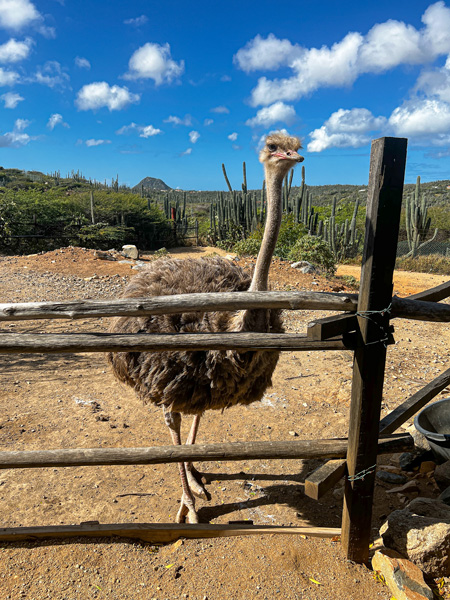
Here’s one of the more heartwarming facts about ostriches: it seems that ostriches share early parenting duties.
During the day, the female ostrich will sit and keep the eggs warm and safe. At night, the male ostrich will take over until the morning.
The reason for this is actually quite smart and has to do with the ostrich’s different colors of feathers.
Female ostriches have brown feathers, which makes it easier for them to hide amongst the brown plains of their natural habitat.
Male ostriches have black feathers, so they are able to hide better in the pitch-black dark of night!
9. Most ostriches live in Africa
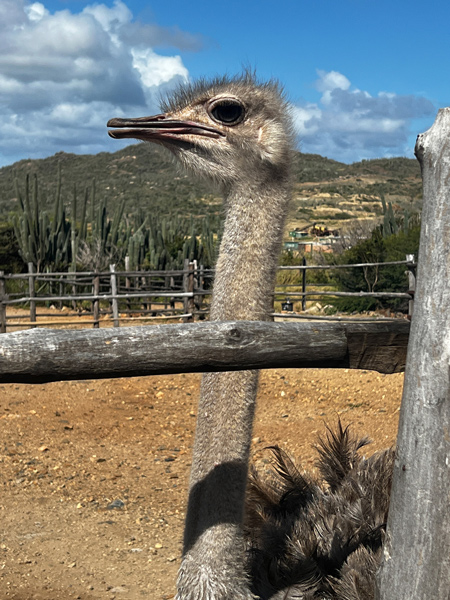
A lot of ostriches are kept on farms, in wildlife reserves, in zoos, and in private hands. Those that are still roaming about in the wild tend to live in Africa, on average.
With their high-speed running capabilities, the wide savannahs and open woodland are great places for ostrich herds to live and thrive.
They tend to be mainly concentrated around the north and south of the Sahara and are capable of living in partial and even full desert environments.
More bonus ostrich facts: ostriches are farmed in Australia, and some that jump the boundaries of those farms escape off into the outback.
Because of this, you might find yourself face-to-beak with a wild ostrich while out exploring in “the bush!”
10. Ostriches have some natural resistance to sandstorms
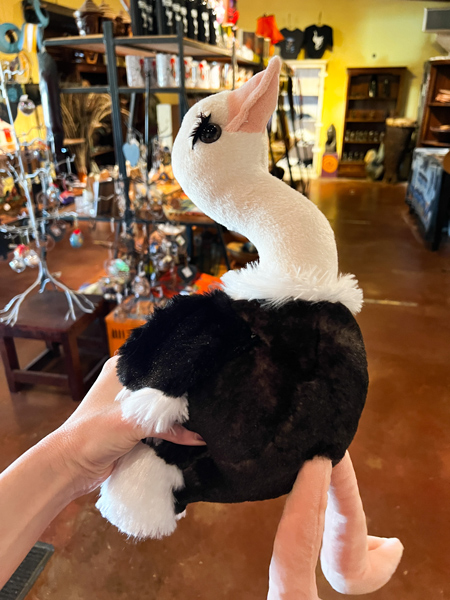
You may sometimes notice (and be envious of) the more cosmetic facts about ostriches, like how they have particularly long and thick eyelashes.
This is a presumably evolutionary trait that enables them to keep their eyes safe during sandstorms that can occur in very dusty and arid areas.
Because of this, they have developed their own natural eye protectors and can now avoid going inadvertently blind from the rough sand.
11. Ostriches are somewhat bird-brained
Here’s one of the best ostrich facts for kids: the ostrich brain size.
An ostrich’s brain is smaller than one of its eyeballs.
This may explain why they make some questionable decisions sometimes.
12. Ostriches have a long lifespan
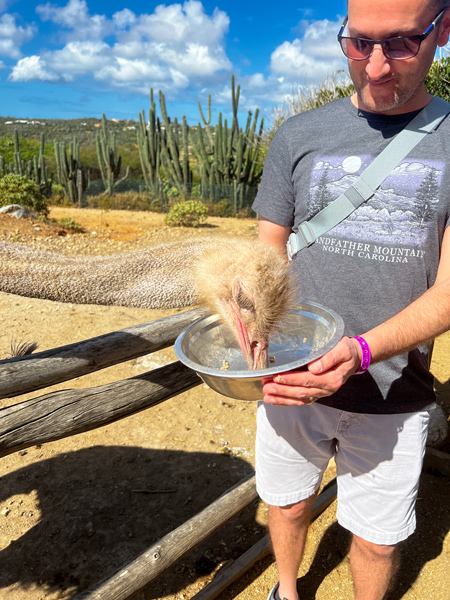
For more information about ostriches, know that an average ostrich can live up to 30-40 years, and that’s just in the wild.
Ostriches may well be able to live longer in a more regulated and comfortable environment.
While most families opt for a dog or a cat, if you’re looking for a longer-term farm companion, you could do worse than an ostrich.
Just know that they don’t bond with humans.
Dogs, on average, live for 10-13 years. Cats have a slightly longer average lifespan of 12-18 years, possibly because they do a lot more laying about than playing fetch.
13. The ostrich has a camel in its name
The official scientific name for an ostrich is “Struthio camelus,” from the Struthioniformes order of birds.
“Struthio camelus” is not a spell, nor an incantation; it’s just one of the more fun facts about ostriches.
14. Ostriches have very unusual digestive and eating habits

Ostriches are omnivores and subsist on a diet of plant matter, invertebrates, and small lizards.
But here’s one of the surprising ostrich facts: they have no teeth.
So in order to break up any larger portions of food, they swallow gravel and small rocks as well, which sit in their stomachs (of which they have three) and gradually break up the things they eat.
At any one time, an adult ostrich will have around 2 lbs of stones inside it.
15. Ostriches do not bury their heads in the ground
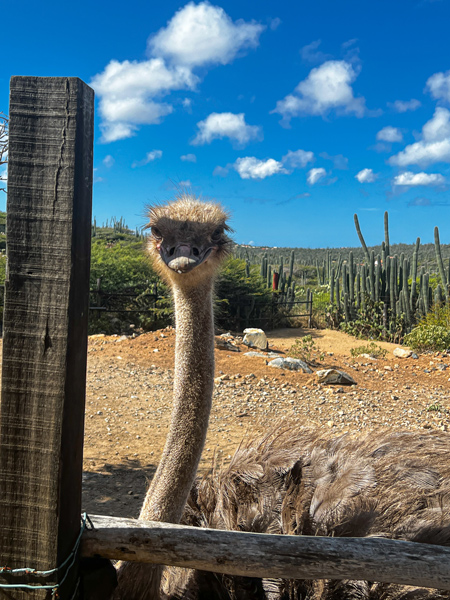
This is one of the most wrongly thought-of ostrich facts in the world.
Thanks in part to both common misconception and Saturday morning cartoons, many people believe ostriches bury their heads in the ground when they sense danger.
But this is not the case.
When an ostrich needs to hide, it will lie down flat on the ground with its neck stretched out, in order to look less visible and more like a pile of dirt from a distance.
They also regularly turn over the eggs in their nests, and since ostrich nests are made in the ground, it can look as if they are sticking their heads underground – but they aren’t!
Save These Facts About Ostriches For Later:
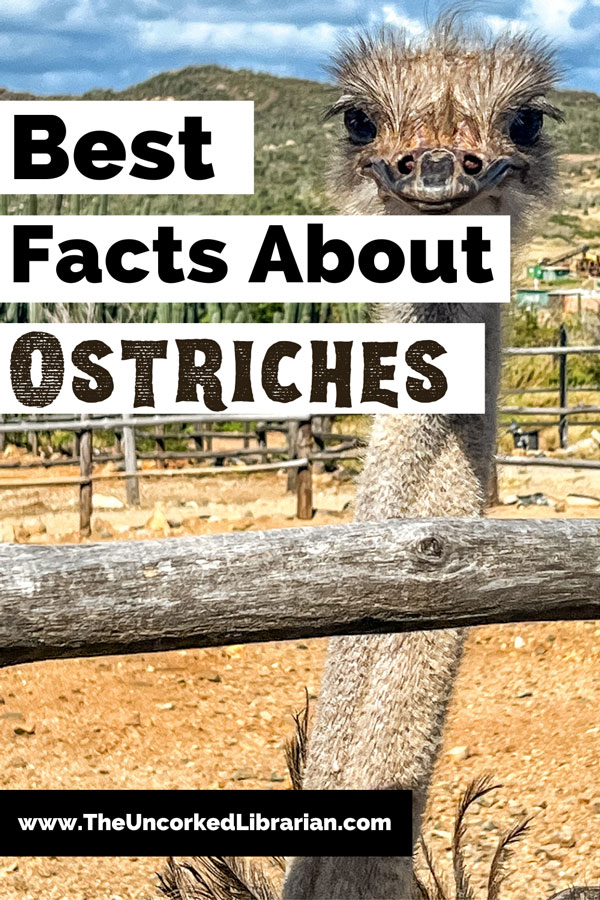
What information about ostriches are you still looking for?
Did we answer all of your ostrich questions? What more do you want to know?
Do you have any more fun facts about ostriches to share? Let us know in the comments.
P.S. This post was inspired by our visit to the Aruba Ostrich Farm, which was one of the most unique things to do in Aruba.
Here, ostriches are raised humanely and are well cared for; you can even try their eggs at the on-site restaurant.
Tour the property, learn more about ostriches, and meet emus and peacocks too. And, if you love animals, head to Donkey Sanctuary Aruba too – a farm for rescued wild donkeys.
Explore all of our Aruba Travel Guides.
More animal facts:
Interesting Donkey Facts
Facts About Black Bears
If you love animals, you may also like:
Books About Cats
Famous Dogs In Literature
Books About Dogs
